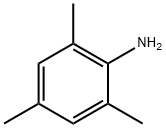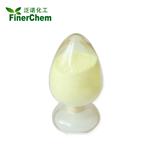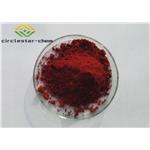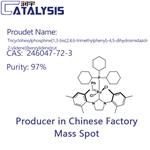Description
Grubbs catalysts are a series of transition metal carbene complexes used as catalyst for olefin metathesis.1 The Grubbs catalysts are based on a ruthenium atom surrounded by five ligands: two neutral electron-donating entities (e.g., trialkylphosphines, N-heterocyclic carbenes), two monoanionic groups (e.g., halides), and one alkylidene moiety (e.g., unsubstituted and substituted methylidenes). L2X2Ru=CHR complexes (where L is a phosphine ligand) were discovered first and are referred to as the first-generation Grubbs catalyst. (L)(L’)X2Ru=CHR complexes (where L is a phosphine ligand and L’ a saturated N-heterocyclic carbene or NHC ligand) are referred to as the second-generation Grubbs catalysts.
The first-generation Grubbs catalysts show attractive functional-group tolerance and handling properties and have been widely used as highly efficient promoters for ring opening metathesis polymerizations, ring-closing metathesis reactions to make disubstituted olefins, ethenolysis (i.e., cleavage of the carbon–carbon double bond), cross-metathesis of terminal olefins, and the preparation of 1,3-dienes via enyne metathesis. These catalysts and analogues are still widely used in important processes, including the ethenolysis of feedstocks derived from bio-renewable seed oils and the manufacture of macrocyclic hepatitis C therapeutics. Nevertheless, the first-generation Grubbs catalysts show limitations with electron-poor and electron-rich double bonds as well as with sterically hindered systems. The second-generation Grubbs catalysts with excellent metathesis activity while retaining the handling characteristics and broad functional-group tolerance of the earlier Grubbs catalysts are thereby developed. At the same time, the second-generation catalysts are stable against moisture and air.
Reference
[1] M. L. Crawley, B. M. Trost, Applications of Transition Metal Catalysis in Drug Discovery and Development, 2012, ISBN 978-0-470-63132-4.
[2] J.I. du Toit, H.C.M. Vosloo, C.G.C.E. van Sittert. “Metal carbenes in homogeneous alkene metathesis: Computational investigations.” Journal of Organometallic Chemistry 738 (2013): Pages 76-91.
Chemical Properties
pink-brown to red-purple crystals or powder
Characteristics
Grubbs catalyst is a kind of coordination compound used in olefin metathesis reaction, and the ligand in it has a great influence on the catalytic performance and stability of the catalyst. Grubbs second-generation catalysts are more active than first-generation catalysts and have a wider substrate range, including sterically demanding or deactivated olefins such as 1,1-disubstituted olefins and α,β-non- Saturated carbonyl compounds.
Uses
Grubbs Catalyst
? M204 can be used as a catalyst for ring-closing metathesis (RCM), cross-metathesis, and ring-opening metathesis polymerization (ROMP). It is also used to synthesize trisubstituted olefins with excellent functional group tolerance and selectivity via cross-metathesis and ring closing metathesis reactions.
It can also be used as a catalyst:
- To synthesize coumarins from phenolic compounds via RCM.
- To cleave secondary (E)-allyl vic-diols to aldehydes.
Definition
Adlhart and Chen found that ligand rotation is the difference between the activity of the first and second-generation Grubbs catalysts. This difference is brought about by a difference in the symmetry of the ligands. The phosphine ligand has a threefold symmetry, which causes a high barrier in the middle of the reaction coordinate, which is forced by the need for rotation of the phosphine. However, the barrier is absent for the second-generation Grubbs catalyst, with twofold symmetry of the NHC ligand. The rate-limiting step for second-generation catalysts is always phosphine dissociation[2].
reaction suitability
reagent type: catalyst
core: ruthenium
reaction type: Ring-Opening Polymerization





